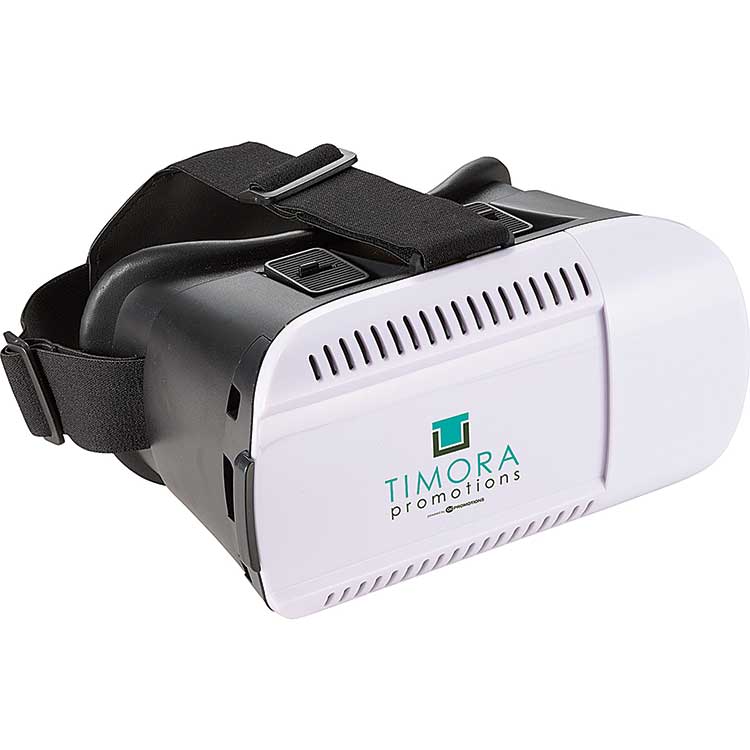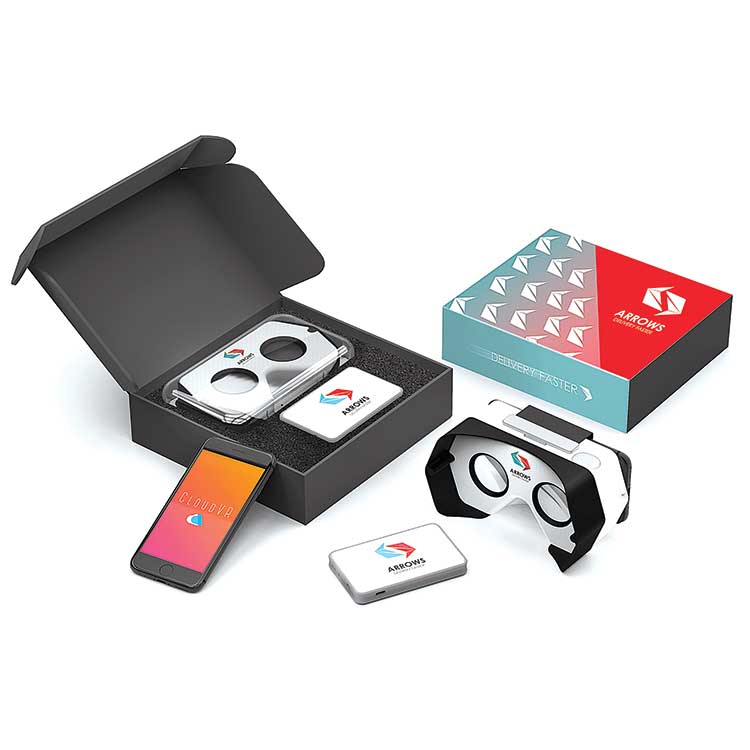Strategy April 10, 2017
Exciting New Reality for Promo Industry
Virtual reality is no longer some fanciful dream. The technology is real and growing – and is poised to revolutionize marketing.
Every year, 3,000 four-year U.S. colleges and universities desperately vie to get noticed. From mass direct-mail campaigns and traveling admissions counselors to state-of-the-art student centers and plush dormitories (cinderblock walls and communal bathrooms no more), the competitive university market is brimming with institutions spending millions of dollars and man hours in an effort to attract students to their halls.
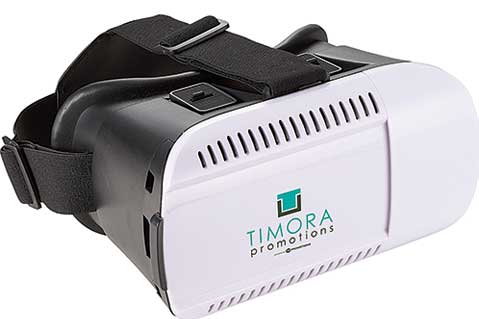
But how well is that money being spent? People throw away mailed flyers, miss college fair tables, and only become aware of new buildings if they visit the school’s website or go on a tour. What if there was a way to cast a wider (even global) net that has the potential to attract more serious prospects?
With virtual reality, it’s already happening.
>>Don't miss! The Future of Virtual Reality Marketing
Schools are now hiring developers to create films that can be viewed in 360 degrees and accessed with an app. The educational institutions are including low-cost headset VR viewers (apparatus where smartphones are placed and used as the screen) in direct mailings or through an opt-in request at their website. Recipients can check out that new dorm and sparkling student center, and also listen to conversations with department chairs – experiences designed to elicit a campus trip for a more in-depth visit. When the prospective students arrive, the school can assume it’s a serious contender on these prospects’ lists.
“They have more detailed questions to ask, and they know what they want to explore even more when they get there,” says Gordon Meyer, director of YouVisit, a VR provider founded by three international students at Brandeis University who wanted to give more people the opportunity to take campus tours, regardless of income and location. “VR allows you to travel far afield in a moment.”
Virtual reality is no longer a futuristic pipedream. VR is expected to be a $30 billion global industry by 2020, with annual shipments of headsets predicted to exceed 12 million units this year and reaching 55 million in 2022.
But perhaps of more importance for advertising and marketing professionals is exactly who is using VR. It’s not just gamers with cutting-edge rigs, or Silicon Valley labs developing the highest technology. VR is within the reach of just about anyone, and it can be immediately leveraged in marketing and sales by offering interaction with a brand’s value proposition.
>>Don't miss! The Basics of Virtual Reality
“I can’t think of one business that shouldn’t be in VR,” adds Meyer. “It serves marketing, sales and brand awareness for every vertical. The less-expensive viewers move like hotcakes at trade shows. People can jump right into it just using their smartphones.”
For the promotional industry in particular, it’s an exciting new reality. VR will allow distributors to demonstrate to clients how their branded products would work in a future promotion. Distributors can also partner with brand agencies to create VR marketing content for clients that is instantly memorable. Suppliers already sell VR viewers that can be logoed and given away for exceptional brand engagement.
Polyconcept North America (PCNA) has been selling the hardware since 2014, when retail trends started to heat up. They went from one headset to four in just six months. “VR is now a part of more projects than ever before,” says national sales manager Rick French. “Flash drives went through the same thing. People weren’t sure what they were, now they need 100 by Friday. That’s where these headsets will go. The knowledge of the technology is getting broader.”
Falling costs will drive even more adoption, resulting in new revenue channels, says Wilson Tang, vice president of digital experience at VR content provider FreemanXP. “We’re developing new ways to interact,” he says. “We’re still learning and discovering. The technology is developing at breakneck speed.”
Augmented Efforts
If the recent popularity of Pokémon Go and Snapchat is anything to go by (the latter reports it had 161 million daily active users at the end of 2016), Augmented Reality (AR) has a robust future ahead of it. With AR, a digital figure or object is placed in real space and viewable with a smartphone. “It’s the diametric opposite of VR,” says Gavin Finn, president & CEO of Kaon Interactive. “Instead of a person being placed in a digital space, you’re putting a digital object into a real space.”
And now, it’s moving beyond Poké Balls and Snapchat Lenses to become a true disruptor in the branding, marketing and selling process. Finn says it’s a great way to demonstrate the possibilities of a product with a relatively inexpensive development process that’s often much quicker than that of VR.
“A potential customer can place a sofa they’re considering buying into their living room to see how it looks and fits,” he says. “They can walk around it and see it at all angles. It’s just a matter of time before we buy everything that way.”
Stambol Studios also offers home furnishing demos through AR, as a “try before you buy” benefit, says CEO Dogu Taskiran. “You can send a client your whole catalog on just a piece of paper, and they can see 3-D AR renderings of everything, rather than you sending them just a few samples,” he explains.
Since AR requires no more hardware than a smartphone, it’s currently more accessible than VR, says Ed Levy of Edventure Promotions (asi/186055). “With an AR app, you can just hold up your phone and see digital information,” he says. “Soon, cities will have AR tags on all their lightpost banners.” Already, he says, there are AR-capable bus stops where the daily schedule appears on a smartphone screen when it’s held up. “It’s going to be a mass industry by next year,” says Taskiran.
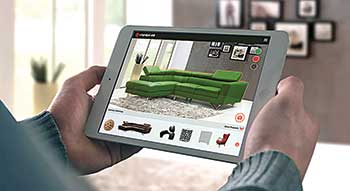
AR adds an extra layer of information to everyday life, like this digital couch that consumers can view in their home before buying the real thing. (Credit: Stambol Studios)
Desert. Blowing sand, coarse scrub and forbidding rock formations. A young girl with a Middle Eastern accent begins to speak.
“We walked for days crossing the desert to Jordan,” she says as the scene shifts to an interior shot and she sits in front of the camera. Through a translator, she states, “My name is Sidra, I am 12 years old…[and] I have lived here in the Za’atari camp in Jordan for the last year and a half.”
So begins the story of a young Syrian refugee forced to flee her homeland with her family and travel on foot to a camp that, at the time of filming, sheltered 82,000 refugees. The well-known film, “Clouds Over Sidra,” was created with 360-degree VR technology for the United Nations, and gives viewers a firsthand look at the Syrian refugee crisis. (The video can be readily found online.) They visit Sidra and her family in their makeshift home, join her at school, stand among her friends as they play soccer and see a local bakery and fieldhouse.
“The UN uses VR films to raise money for disaster areas,” explains Tang. “We’ve become desensitized to 2-D, but if you’re in VR with a little girl standing in front of you, it’s hard to say no.”
“Clouds Over Sidra” represents one type of VR – 360-degree 3-D, a viewable 3-D environment watched through a headset and smartphone. It’s a scripted, videographer-driven view that’s more memorable than a flat, 2-D presentation. With a 360-degree camera, content can be created relatively quickly, and it pairs well with smartphone-based headsets (many of which are inexpensive and make for a great giveaway item). The second type of VR – an immersive, fully-realized 3-D environment – can take much longer to create and requires more robust hardware (headsets, touch controllers and PCs), but offers each person an individual, unique interaction, complete with handheld controllers that reflect movement inside the virtual environment.
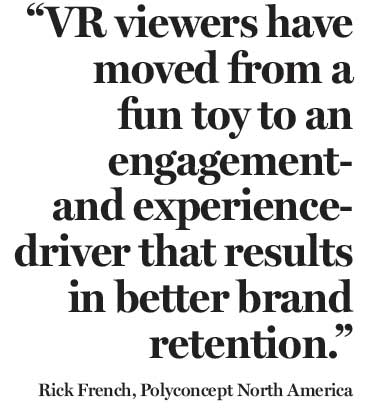
“Full immersive allows you to take any path, in any sequence, with any timing,” says Gavin Finn, president & CEO of Kaon Interactive, a provider of 3-D interactive sales and marketing solutions. “You can walk upstairs, open doors, go in different rooms. The experience is completely personalized. Imagine a fully immersive ‘Clouds Over Sidra’. You can have 20 people telling their stories, and you can choose to go into different homes at the camp and listen to them.”
Immersive VR is most commonly associated with video games, but there are countless other possibilities. Participants can kick a soccer ball, open a book and read it, click on a TV screen and watch a commercial, or interact with a product that can be purchased instantly. “It can be part of an action campaign,” explains Michael Rapoport, founder, owner and CEO of Get Virtual, which focuses on VR for digital advertising. “The content is expensive to produce, but products within the experience can be sponsored by different companies.” Soon, he adds, entities will be hiring heads of VR marketing in greater numbers.
Consumers and buyers no longer have to rely on their imagination to make a purchasing decision. “I’m not just arm-waving anymore and telling the client. I’m showing them,” says Chris Munz, vice president of business development at concept3D, a tech company that creates interactive mapping and virtual tour software products. “It connects prospects and customers to your value proposition.” Tang calls it “a powerful business tool” that’s moving beyond the gaming applications that drove its initial popularity. “The challenge is getting past the parlor tricks,” he adds. “It’s not just fun and games anymore.”
2017 promises to be a banner year for VR, as costs come down across the board and people become more aware of what the technology offers. Last year, Dave Ho, president & founder of digital branding agency York & Chapel, was introducing clients to VR for the first time. Now, they come to him with awareness of it and an eagerness to know more. “It’s more education on how it fits in their strategy,” he says. “They’ll come to us with a desire and we’ll work with them on ideas.”
It’s a technology that has the potential to improve marketing, selling and brand engagement in every industry. “Someday we’ll find it bizarre that we used to look at 2-D images to make purchases, with a review from a complete stranger,” says Meyer. “We’re bringing a brand’s story to people and creating an adventure with the product.”
Facebook Live
A Look Into VR
Emerging headset technology has propelled VR forward. At the higher end of the cost spectrum are the Sony PlayStation VR, Facebook’s Oculus Rift and the Vive from HTC; they offer fully immersive experiences, but they’ll set customers back anywhere from $399 to $799, and that’s not including the PCs they’re tethered to, which run about $2,500. On the development side, full immersion content can cost tens of thousands of dollars to create.
For those looking for VR at a lower cost, 360-degree 3-D viewing may hold the answer. Samsung Gear VR headsets, compatible with the Galaxy line of smartphones, cost $69.99. The cheapest by far is the Google Cardboard, at around $15. Low-cost headsets are available from major retailers such as Best Buy, Game Stop, Target and Kohl’s. Ho says he recently bought a $20 plastic viewer for his smartphone at T.J. Maxx. “A year ago, the same one was $50,” he says.
Promotional products supplier PCNA offers six styles of branded viewers with generous imprint areas at a variety of price points, from the Virtual Reality Glasses with 3-D Lens Kit (SM-3737) from Bullet (asi/42424) to the Luxury Virtual Reality Headset (7140-79) from Leed’s (asi/66887). “The first one we offered was a big success,” says French. “We expected it to sell, but we were surprised it did so well.” While PCNA does not offer content development, their viewers work with a variety of widely available VR apps for Android and iOS, and will also take videos captured with smartphone cameras and give them a 3-D treatment.
Meanwhile, Ottawa, ON-based supplier Powerstick.com (asi/51566) offers CloudVR, a branded VR kit for 360-degree photos and videos that includes a branded headset and app, access to additional iOS and Android apps and PocketCloud, a cloud-based storage system that backs up all videos and photos on a smartphone and synchs it to the headset. “Many clients will choose to use the CloudVR app’s 360-degree videos of a rainforest, roller coaster ride, New York City street and others, along with the PocketCloud solution,” says Operations Manager Tyler Walls. “They don’t have to generate content. They can give it away with the videos and the extra storage bonus. Recipients just fire it up and get started.”

The hardware sell, says French, is getting easier as awareness grows. “We’re more comfortable selling it, and the audience is more comfortable using it,” he says. “It’s moved from a fun toy to an engagement- and experience-driver that results in better brand retention.”
If you’ve ever wanted to explore a far-off country, an iconic landmark or a famous ancient city in its heyday, VR can take you there. The UN’s commissioned VR films are one example. Ed Levy, president and founder of Edventure Promotions (asi/186055), recently helped the Art Institute of Chicago do a self-promotion with a 360-degree 3-D view of Vincent Van Gogh’s iconic bedroom in Arles, France. Munz says his kids have used headsets in school to take a 360-degree tour of Ancient Egypt. “We used outdated encyclopedias,” he says. “This puts people in places they never thought they could go.” Those memorable interactions are widely applicable for brand engagement. French says an end-buyer recently used Bullet’s Virtual Reality Glasses with 3-D Lens Kit to generate trade show booth buzz by asking visitors to record a creative 3-D video of the show floor and submit it for the chance to win a prize. “Its low price point made it a perfect giveaway,” he explains. “The glasses render any video taken on a smartphone into 3-D viewing, so they didn’t need to download any kind of special app. It certainly drove engagement.”
French’s example underscores the fact that in the promotional product industry, branded viewer giveaways are the dominant VR promotion. VR content creation is lagging behind, and immersive experiences in the promo realm are practically nonexistent given the novelty and exorbitant costs. But experts believe the costs will come down in the near future. And already, VR agencies are partnering with others to create amazing experiences that show where the future of marketing will go.
The team at York & Chapel created an immersive VR tour of ADP’s Innovation Labs, which are located across the country. While ADP is most well-known for its payroll services, the company wanted to raise awareness to its complete back-office suite. “Their Labs show the services they offer, but they can’t bring everyone to them,” says Ho. “So they’re bringing the Labs to the people.” At a recent consumer conference, ADP set up six viewing stations equipped with the Oculus Rift for booth visitors to tour the Labs.
Similarly, Kaon Interactive recently worked with a medical diagnostics equipment company to give their clients a look at how equipment would fit in their workspaces. “Diagnostics labs are often in hospital basements, where it’s constrained and tight, with columns and exposed HVAC systems,” says Kaon’s Finn. “It’s a difficult space in which to work. So how do these companies know how the equipment will fit in a specific space and what the workflow will look like?”
For years, the medical diagnostic equipment company would obtain space specs, create hand-drawn diagrams of how the equipment might fit, and consult with the client in a very back-and-forth process. After working with Kaon, the company could put the diagnostics equipment inside its clients’ workspace, demonstrating where it would fit and how it could improve workflows. “The client can walk through the lab as though the changes have already been made and interact with the equipment,” says Finn. “They can see and understand the impact of different value propositions. Customers get it right away, and it’s transforming the sales process.”
VR can also show viewers planned environments that don’t yet exist in actual reality. Dogu Taskiran, CEO of VR development firm Stambol Studios, helped shift the sales process for a door hinge manufacturer that will be exhibiting at a large trade show with absolutely no physical samples on hand. “All the products will be on VR,” says Taskiran. “People will be able to see them in hotel lobbies, kitchens and elsewhere. It’s about selling product and space, while wowing people and creating an emotional bond with a brand. It’s seeing what you’re going to buy before you actually buy.”
Tang envisions a time in the not-too-distant future when massive automotive dealerships are a thing of the past. “Their biggest cost is real estate,” he says. “Soon, you’ll just use VR to test drive cars and pick one out with the features you want, and it’ll be delivered to your house.”
The falling costs of hardware and content development, plus the myriad applications for marketing and selling, make VR a veritable technology that will have significant impact on the promotional industry. “We’re converting a consideration into a real-world decision,” says Meyer. “VR is a palette for any marketer. It’s now the most compelling medium for selling a brand or product.”
Slideshow
Sara Lavenduski is the senior editor for Advantages. Tweet: @SaraLav_ASI Contact: slavenduski@asicentral.com


